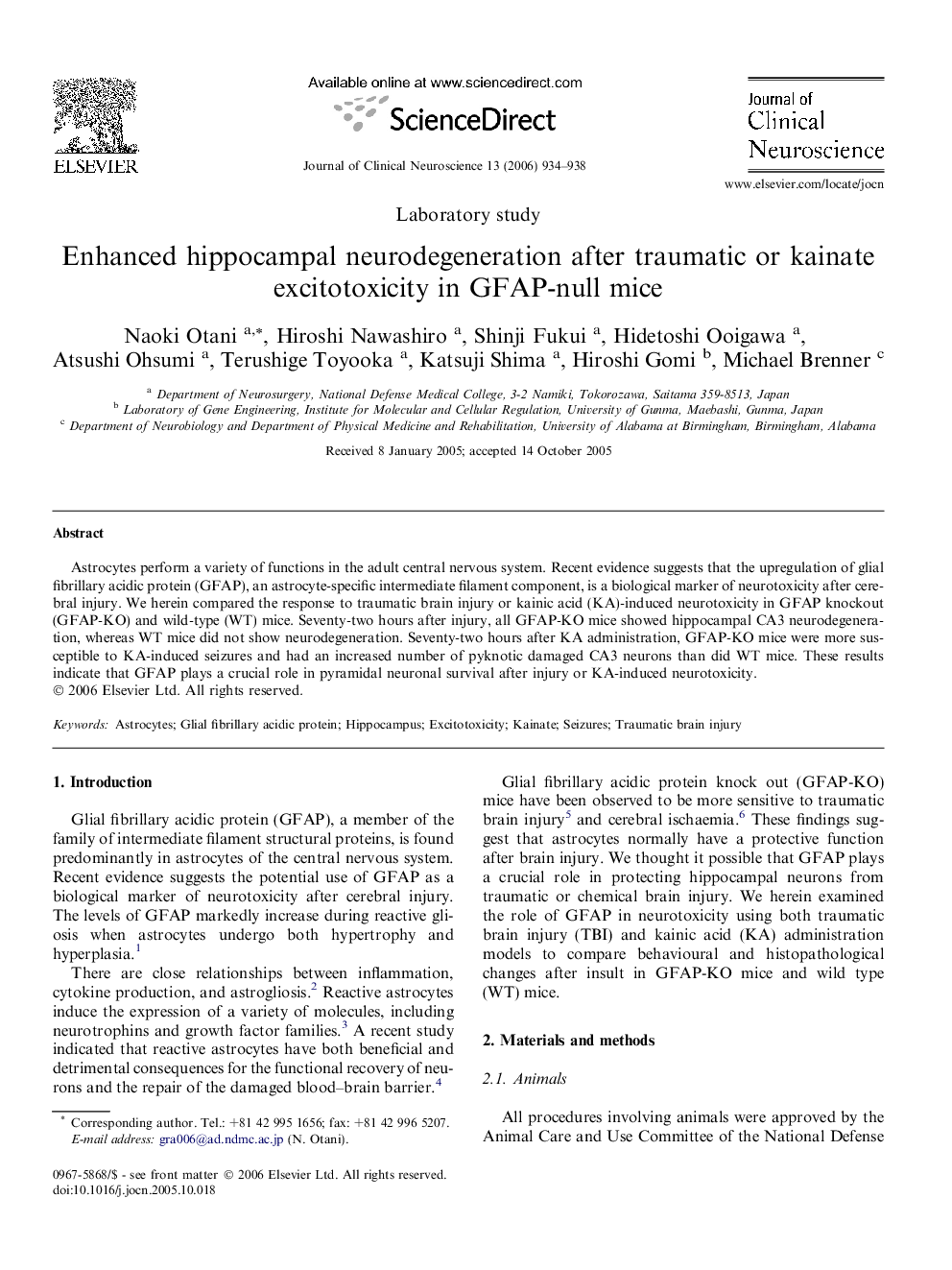| Article ID | Journal | Published Year | Pages | File Type |
|---|---|---|---|---|
| 3063054 | Journal of Clinical Neuroscience | 2006 | 5 Pages |
Astrocytes perform a variety of functions in the adult central nervous system. Recent evidence suggests that the upregulation of glial fibrillary acidic protein (GFAP), an astrocyte-specific intermediate filament component, is a biological marker of neurotoxicity after cerebral injury. We herein compared the response to traumatic brain injury or kainic acid (KA)-induced neurotoxicity in GFAP knockout (GFAP-KO) and wild-type (WT) mice. Seventy-two hours after injury, all GFAP-KO mice showed hippocampal CA3 neurodegeneration, whereas WT mice did not show neurodegeneration. Seventy-two hours after KA administration, GFAP-KO mice were more susceptible to KA-induced seizures and had an increased number of pyknotic damaged CA3 neurons than did WT mice. These results indicate that GFAP plays a crucial role in pyramidal neuronal survival after injury or KA-induced neurotoxicity.
